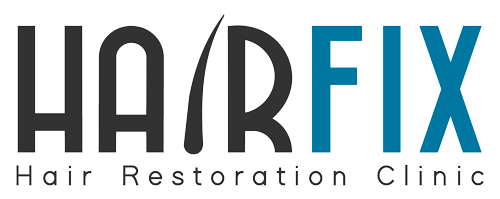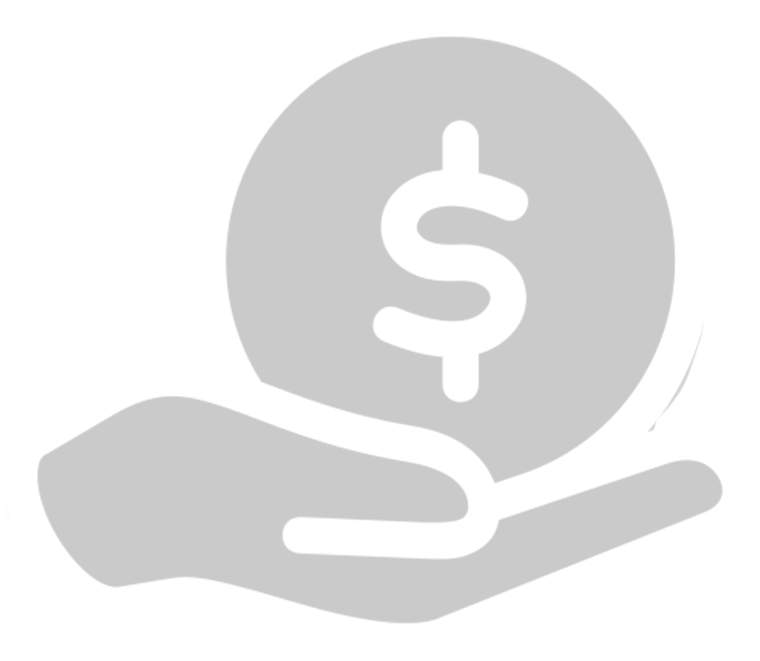BEARD TRANSPLANT
We use FUE / DHI, the most advanced technique for hair restoration with a 97% success rate.
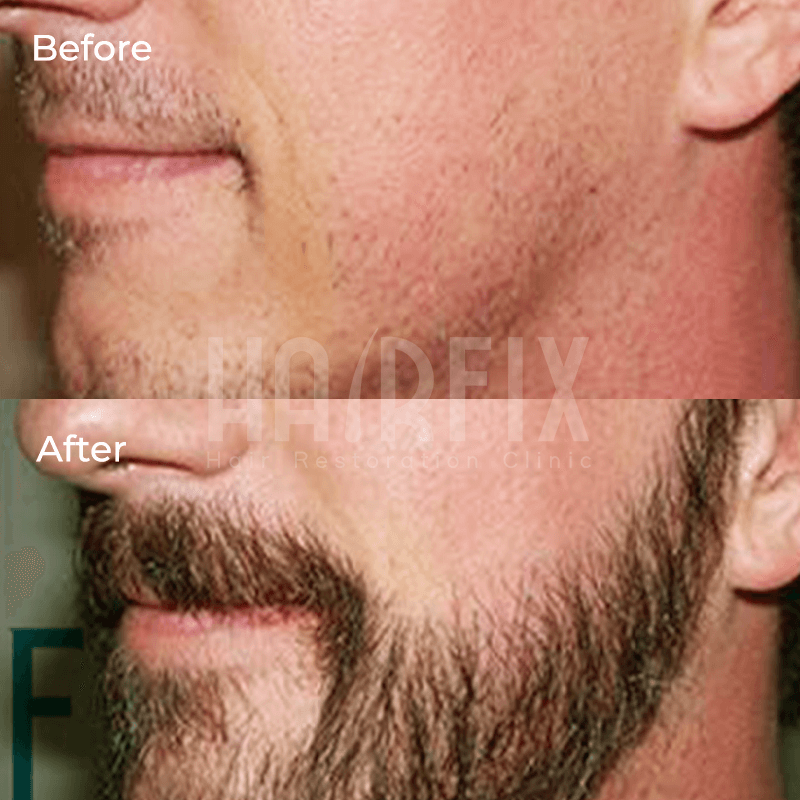
Having a Thicker, Fuller Beard Is Very Easy At Hairfix









What is a Beard Transplant?
This procedure consists of extracting hair from the back of the head to later implant it in the areas affected by alopecia barbae (patchy beard).
With the FUE / DHI technique, natural-looking results and high survival rates of the transplanted follicles are obtained.
How much does beard transplant cost in Tijuana, Mexico?
The cost of a beard transplant at Hairfix starts at $3,700 USD. From there, the final price depends on factors such as the size of the area to be covered and the number of grafts needed. Typically, costs vary depending on individual treatment plans, including the desired beard density and area.
PLATINO PLUS PROMO
- Duration
One Full-Day Procedure - Number of implanted hairs
Based on the maximum extraction quantity - Hair Transplant (FUE / DHI technique)
- In-hospital medications
- Post-operative care kit
- Post-operative care service
- Post-operative medications
- Hyperbaric Oxygen Therapy
- Follow up consultations with the doctor
- Bilingual staff
- Accomodation in Quartz Hotel and Spa (2 nights)
- Laboratory Test
- Beard and Mustache Transplant Package Cost at U.S. Clinics:
Range: $7,000 – $12,000 USD
💸 Estimated savings: 60% by having your procedure done in Tijuana with all services included.
![]()
![]()
![]()
Start Now, Pay Later
Financing available: Affordable monthly payments so you can start your procedure without waiting.
Before and After Beard Transplant

2000 grafts

1500 grafts
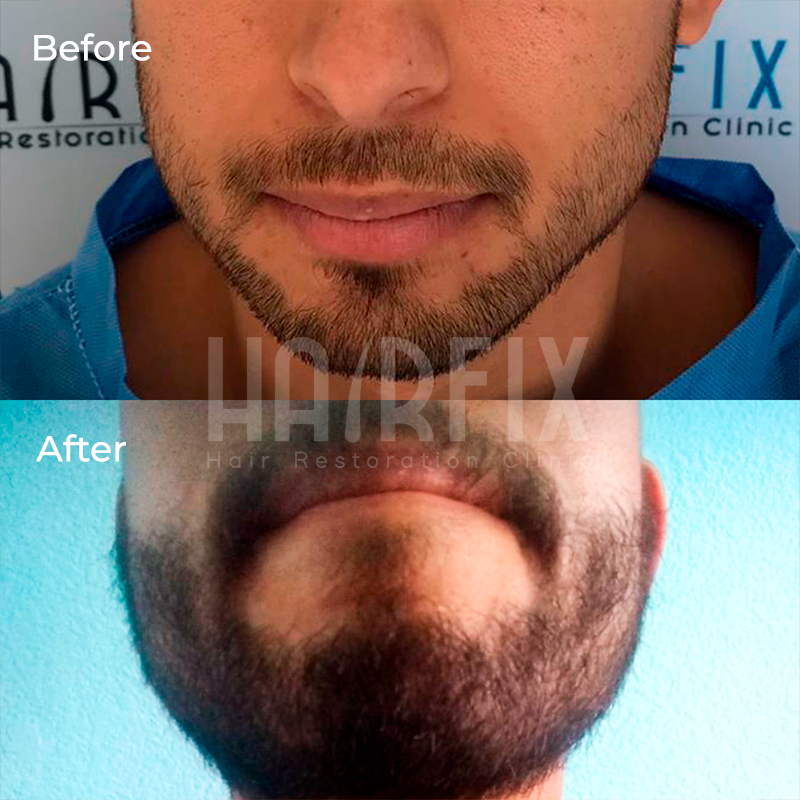
1700 grafts

1000 grafts
Beard Transplant Procedure Steps

Step 1:
Donor Area Preparation
The doctor evaluates the donor area, that is, the one from which the hair will be extracted from. Then, the hair in this area is trimmed to facilitate the identification and removal of hair.
Step 2:
Extraction Phase
The follicles are extracted from the scalp with the use of a specialized tool that, with only 1 mm in diameter, allows the hair to be removed safely.

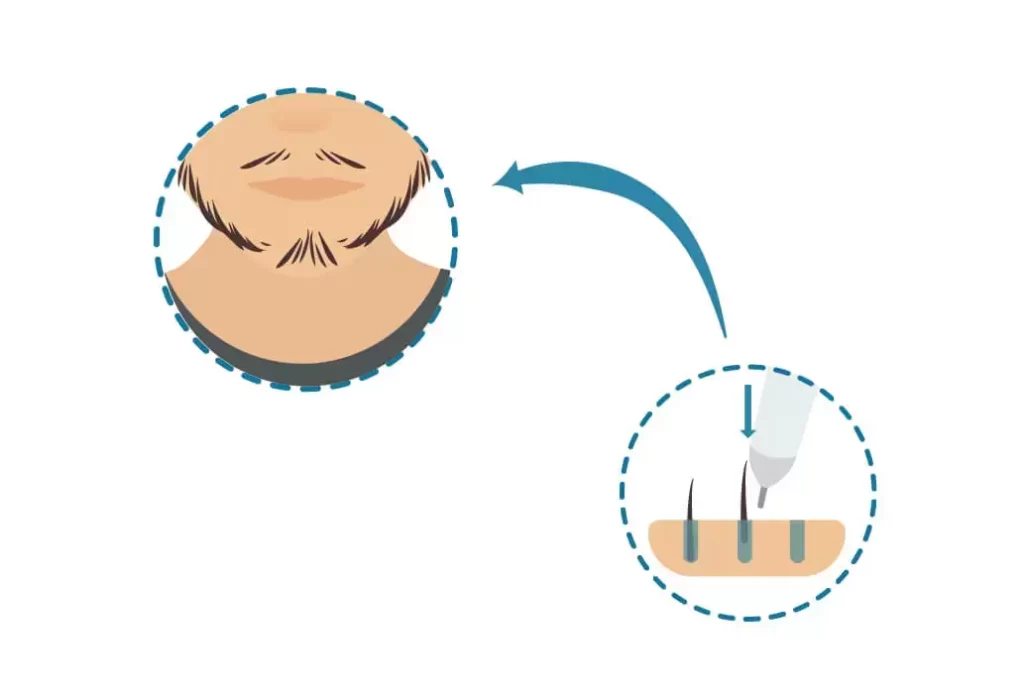
Step 3:
Implantation Phase
The extracted follicles are now implanted in the areas affected by alopecia, such as the mustache or cheeks. Our doctors have full control over the direction, depth, and angle of each implanted hair, achieving natural-looking results.
Step 4:
Healing and Hair Growth
In the first 2 weeks it will be very important to follow the post-op care instructions indicated by your doctor. After a month you will have fully recovered and, from the 4th month onward, the beard will begin to grow. The final results of your beard transplant will be fully appreciated within 12 months.
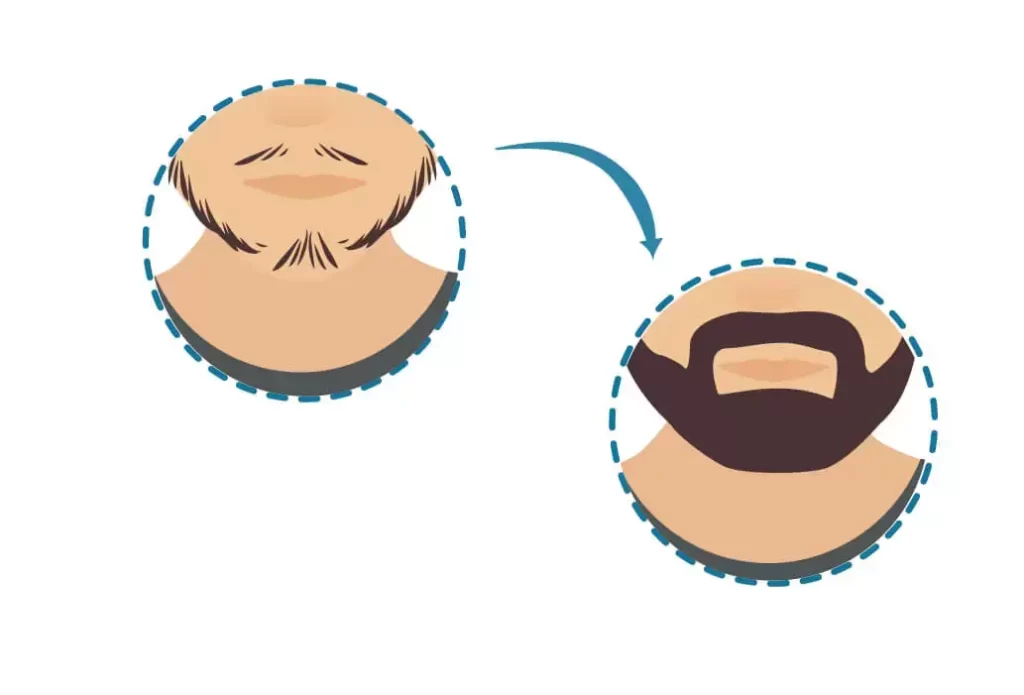
Testimonials
What Our Patients Say About Us
Trustindex verifica que la fuente original de la reseña sea Google. I recently underwent a hair transplant procedure at Tijuana Hairfix, and my experience was outstanding from start to finish. The team coordinated airport transportation and arranged accommodations at an excellent hotel conveniently located next to the facility. Being within walking distance of the clinic was extremely convenient The professionalism and attentiveness of the staff truly set Tijuana Hairfix apart. Dr. Irving Hernandez demonstrated exceptional expertise and professionalism, taking the time to ensure I felt informed and confident throughout the entire process. I would also like to specifically recognize Valeria and Erika, whose kindness, organization, and ongoing support made the experience smooth and stress-free. The entire team was welcoming, attentive, and genuinely committed to patient care. The pricing is highly competitive and, after extensive research, I can confidently say the value is unmatched. Post-procedure care was equally impressive. The day following my transplant, my donor area was carefully evaluated to ensure proper healing, and I was given access to a hyperbaric chamber to promote recovery—an added benefit that reflects the clinic’s commitment to optimal results. Another standout feature is the long-term follow-up support. Tijuana Hairfix offers complimentary follow-up visits at 1, 3, 6, and 9 months post-procedure. Patients only need to arrange their travel, which speaks volumes about the clinic’s dedication to long-term success and patient satisfaction. Overall, I am extremely pleased with my decision to choose Tijuana HairfixTrustindex verifica que la fuente original de la reseña sea Google. I would highly recommend Hairfix to anyone wanting to get a hair transplant. I have not one complaint about the whole procedure. I did my research and decided this clinic was the best fit for me. The price range is the same as Turkey but without the airfare, which ends up being cheaper; and avoiding an 18 hour flight! I drove to the location, check in to the hotel was easy, place was beautiful and staff very friendly. Everything that you need for the procedure is in the immediate area, plenty of restaurants to choose from, area is secure with security roaming the area. I got my labs done in Compass with no issues at all and is located in the same building as where the procedure will take place. Dr Eduardo reviewed my labs and ensured everything was good to proceed with my surgery. He talked to me to see what I wanted done, after outlining and I was happy we moved forward. The actual surgery took 8 hours. I was able to get my crown and hairline done!!!! I had enough on my donating area, I was extremely happy. The procedure itself did not feel like 8 hours, DR. Eduardo had me comfortable and will educate you on any questions you might have. He also has a great sense of humor. Procedure was not painful, the first 20 seconds is maybe where most pain was felt and if you tell me to rate pain from 1 to 10, i will say around 4 for the first 20 seconds, then 0 after that. After procedure Dr will follow up with post op procedures and if you drove, he will also provide a Medical Pass so you can cross back to the US. Took me 15 minutes to cross. Forgot to mention i got an estimate of my hair transplant here in the US and was quoted 23K. I got my procedure done at Hairfix for under 4K with everything included!!! I would recommend Hairfix to anyone thinking of getting a hair transplant.Trustindex verifica que la fuente original de la reseña sea Google. The whole team, from the consultation, to the pickup service, to the hotel, to the procedure. Everything was done perfectly. Can’t wait to see the results. Thank you Aron, Eduardo, Rene, Jazmin and the whole Hairfix team!Trustindex verifica que la fuente original de la reseña sea Google. Only clinic I would recommend to anyone that wants a beard, eyebrow, or hair transplant. Since consultation, everything was made simple. From the emails, Zoom meeting, arrival, etc. Everyone in the clinic greets you with hospitality and treats you like one of their own.Trustindex verifica que la fuente original de la reseña sea Google. I just came to get my first hair transplant and it was an incredible experience from the very start. The doctor I worked with over Zoom, Aron all the way to the surgical doctor Eduardo Moreno and his nurse team!! Oh my god, nurse Valeria and nurse Ivan were tremendous and took amazing care of me. I also want to give a very big shoutout to Jazmin, the medical coordinator who fielded all of my questions and coordinated everything for me, from medical lane passes to scheduling my blood work.Trustindex verifica que la fuente original de la reseña sea Google. Exceptional Experience at Tijuana Hairfix – Highly Recommended! I recently had a hair transplant procedure at Tijuana Hairfix, and I can’t say enough about the fantastic experience I had from start to finish. First, the logistics were seamless. They arranged for my airport pickup and provided accommodation at a great hotel right next to the facility. The convenience of being so close to the clinic was a huge plus. Every morning, I enjoyed a delicious breakfast, and they even provided lunch on the day of my procedure, which was a nice touch. The staff at Tijuana Hairfix is outstanding—friendly, professional, and genuinely caring. They made sure I felt comfortable throughout the process and were always available to answer any questions. The entire team went above and beyond to make the experience as smooth and stress-free as possible. The pricing is unbeatable. After researching multiple options, I can confidently say that you will not find a better deal anywhere else. Plus, they offer exceptional post-procedure care. The day after my transplant, they checked my donor area to ensure everything was healing properly. They also provided access to a hyperbaric chamber to accelerate the healing process—another great perk that made me feel well taken care of. One of the standout features is the ongoing support they offer. Every 1, 3, 6, and 9 months after your procedure, they offer follow-up services at no additional charge. You simply have to fly or drive to their facility to take advantage of these free check-ins, which is incredibly reassuring and shows their commitment to your long-term success. Overall, I couldn’t be happier with my decision to go with Tijuana Hair fix. From the professionalism to the affordable pricing and continued support, this has truly been an amazing experience. I’m thrilled with my results and so glad I made the choice to do it here. Highly recommend it!Trustindex verifica que la fuente original de la reseña sea Google. Desde recepción el trato es cortes y atento. Acudí con el Dr. Aron Obregon donde resolvió mis dudas y muy claro y conciso sobre mi situación; sus recomendaciones son de utilidad, brinda confianza a resolver cualquier tipo de duda.
Frequently Asked Questions
A beard transplant is ideal for men who have sparse facial hair, patchy areas, or are unable to grow a full beard due to genetics, scars, burns, or hormonal factors. Good candidates are generally healthy individuals with a stable donor area (usually the back of the scalp), realistic expectations, and no underlying skin conditions that could affect healing.
The procedure involves extracting individual hair follicles from the donor area—typically the back or sides of the scalp—and implanting them in the beard region. Each graft is placed carefully to match the natural angle and direction of beard growth, creating a full and natural look.
The donor area will not regenerate the exact same follicles that were extracted. However, when performed correctly by a specialist, the extraction is done in a way that leaves surrounding hairs intact, making the area appear visually unchanged or only slightly less dense.
Yes. Once the transplanted follicles take root, they continue to grow hair for a lifetime, just like they did in their original location. The results are considered permanent, although the final appearance depends on proper care and the patient's individual healing process.
The procedure typically takes between 4 to 8 hours, depending on the number of grafts required. It is usually done under local anesthesia on an outpatient basis.
Initial growth can be seen after 3 to 4 months, but full results usually appear after 9 to 12 months. It's normal for the transplanted hairs to fall out in the first few weeks—this is part of the natural hair growth cycle before regrowth begins.
After the procedure, patients are advised to avoid touching or washing the treated area for a few days. Mild swelling and redness are common. It’s important to follow the surgeon’s aftercare instructions, which may include gentle cleaning, avoiding direct sun exposure, and refraining from shaving or trimming the area for a few weeks.
When performed by experienced professionals, side effects are minimal. Possible side effects include temporary swelling, redness, scabbing, or itching. The use of modern techniques like FUE (Follicular Unit Extraction) leaves tiny dot scars in the donor area, which are usually invisible once the hair grows back.
Preparation may involve avoiding certain medications, alcohol, and smoking for several days before the procedure. Your doctor will provide a personalized guide based on your medical history. It's also important to arrive well-rested and with clean hair and skin on the day of the surgery.
Yes, but only after the area has fully healed—usually around 3 to 4 weeks post-procedure. Once the transplanted hairs start growing naturally, you can treat them like the rest of your facial hair, including trimming, shaving, or styling as desired.
Success rates for beard transplants are high, especially when performed by experienced specialists. Most patients achieve a natural-looking, dense beard with permanent results. The key to success lies in proper technique, realistic expectations, and diligent aftercare.
